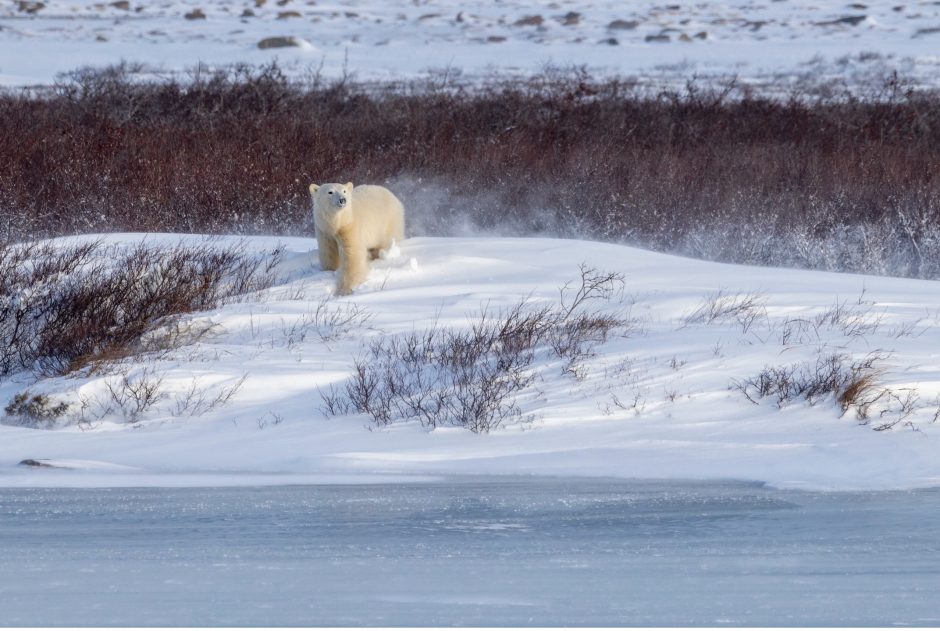
How Much Telephoto Do You Need to Photograph Churchill’s Polar Bears?
Telephoto lenses are must-haves when it comes to wildlife photography. They bring the action closer to you, so that more of your frame is filled with the animals you’re photographing in the way of your choosing.
A quick note: Sometimes telephoto is referred to as “zoom,” because on point-and-shoot cameras, we “zoom in” to make use of the telephoto capabilities of the camera. However, technically, “zoom” refers to the variability of focal lengths, like 100–500mm, and not necessarily the maximum telephoto power to make things bigger in your frame. Yep, it’s nitpicky, but I wanted to get that terminology out of the way early, because I’ll be referring a lot to telephoto throughout this article in reference to the magnification power of your lens.
Alrighty, let’s get into it.
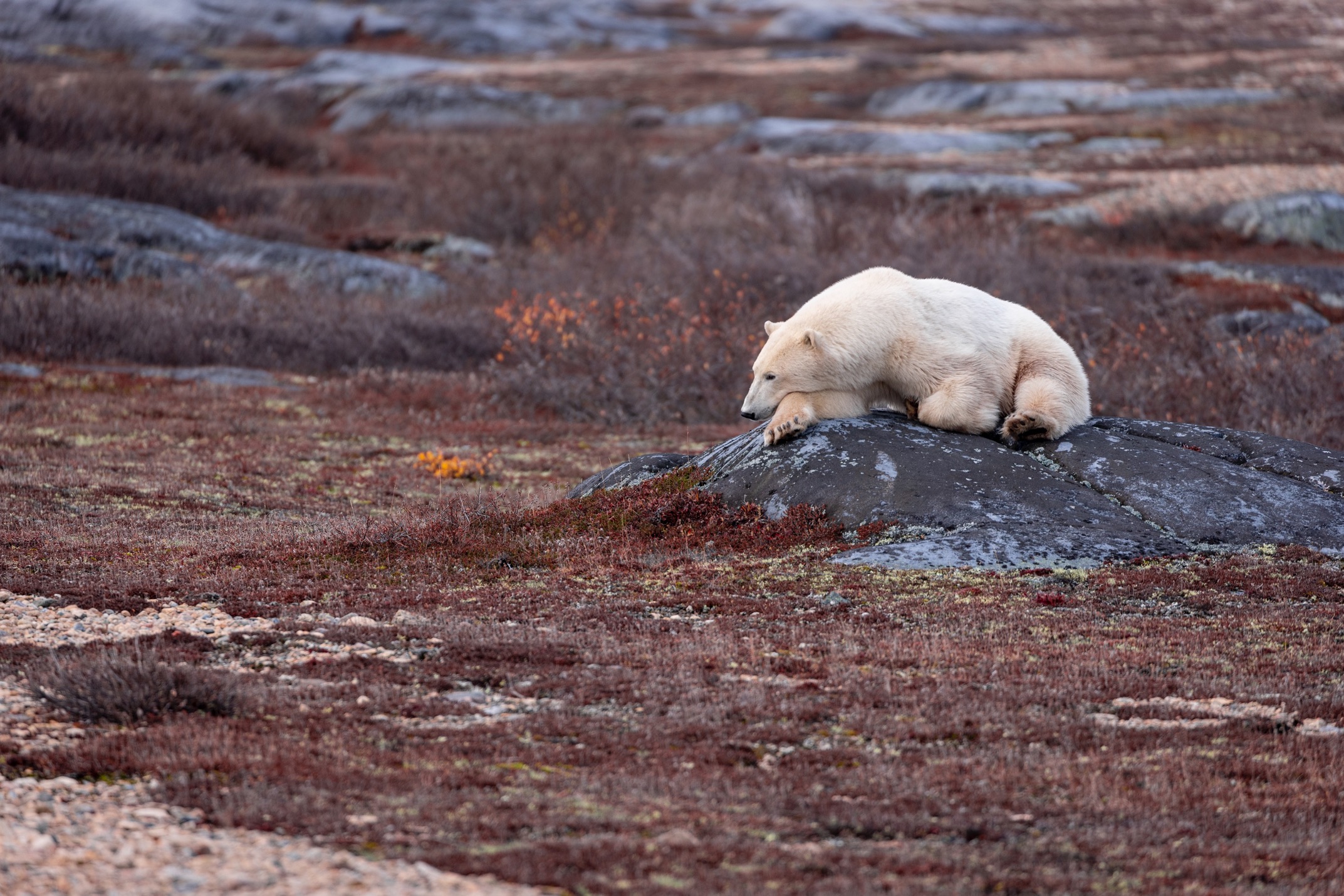
It’s a Balance of Desires
Simply put, when talking about telephoto lenses and photographing Churchill’s polar bears, there is absolutely a give and take no matter what your budget is, what strength and stamina you have while toting around big, heavy gear, etc. That is, the ideal telephoto lens is one with maximum versatility, maximum reach, minimal weight and size, maximum quality, and affordable. Unfortunately, you’re just not going to get it all. It’s about picking out which of these things are feasible and most important to you.
Don’t worry, I’m not going to leave you on a cliffhanger here—I promise to give hard and fast advice.
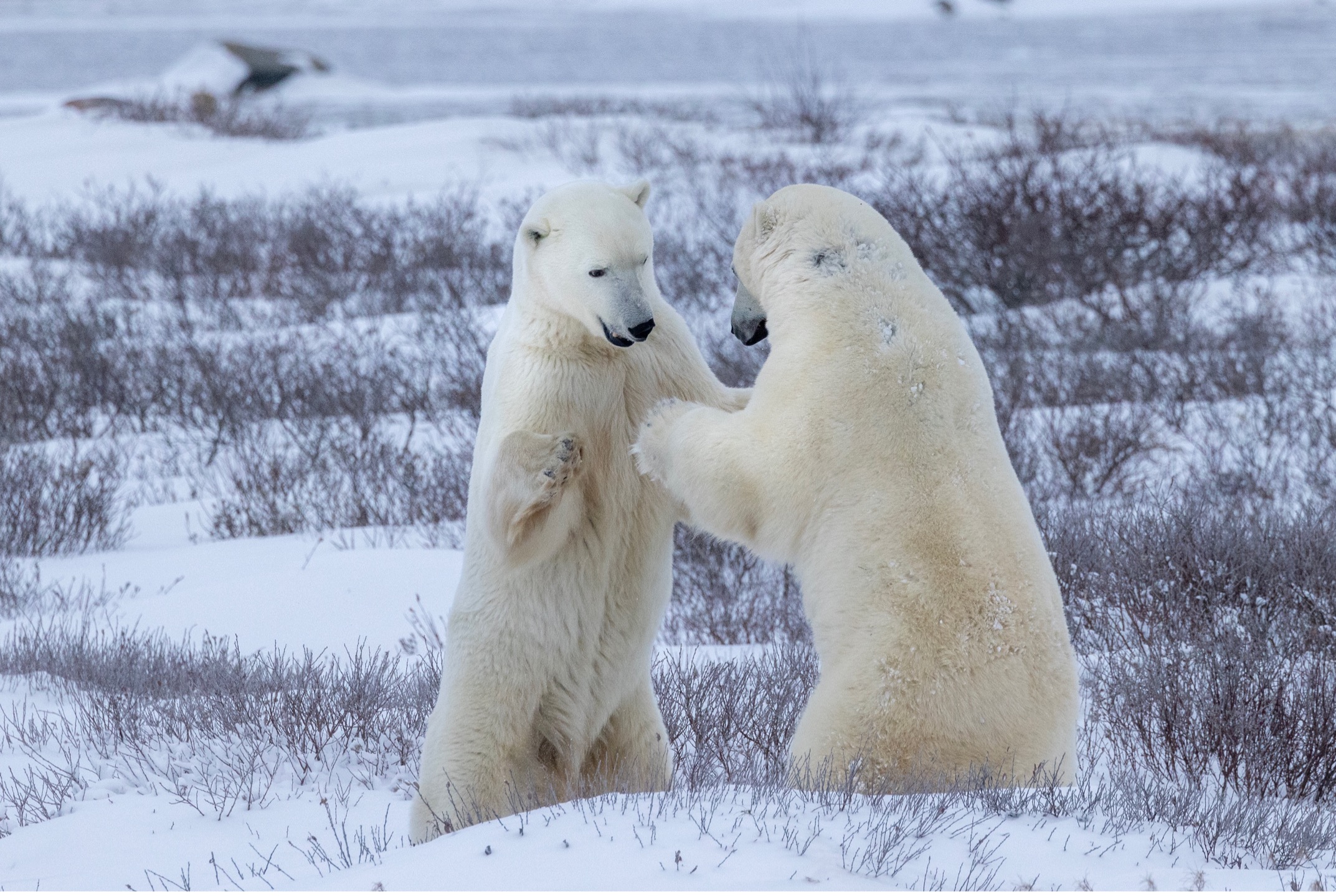
The Best Focal Lengths
To me, the most critical element in the above list is reach, aka magnification power, aka maximum focal length. I feel that in order to make the most of a polar bear photo adventure, you really need something between a 400mm and 600mm lens at full-frame equivalent. The reason I say full-frame equivalent is that many cameras have a “crop factor” in them that further magnifies the image due to their smaller sensor size.
Full-Frame vs. Crop-Frame with Focal Length Calculation
This is a good time to write a note to yourself to google your camera’s make and model and see if you have a crop-frame or full-frame, and what the crop-magnification power is if you do have crop. For instance, most introductory mirrorless and DSLR cameras (less than $2,000 retail) like Canon Rebels, Nikon 7200 series and OM System cameras will have a 1.6, 1.5 or 2x multiplier, respectively. Thus, if you have a 400mm lens on a crop-frame Canon, it’s actually a 640mm lens at full-frame equivalent (400 x 1.6) or maybe even an 800mm if you have a 2x crop factor.
It’s tempting to gloss over this crop-frame vs. full-frame thing, but as you can see, when we’re talking about appropriate focal lengths it can make a big difference.
So, as a reminder, what I’m advising is a lens capable of between 400mm and 600mm focal length. The reason for this range has to do with accessibility of appropriate lenses, photographic style and cost.
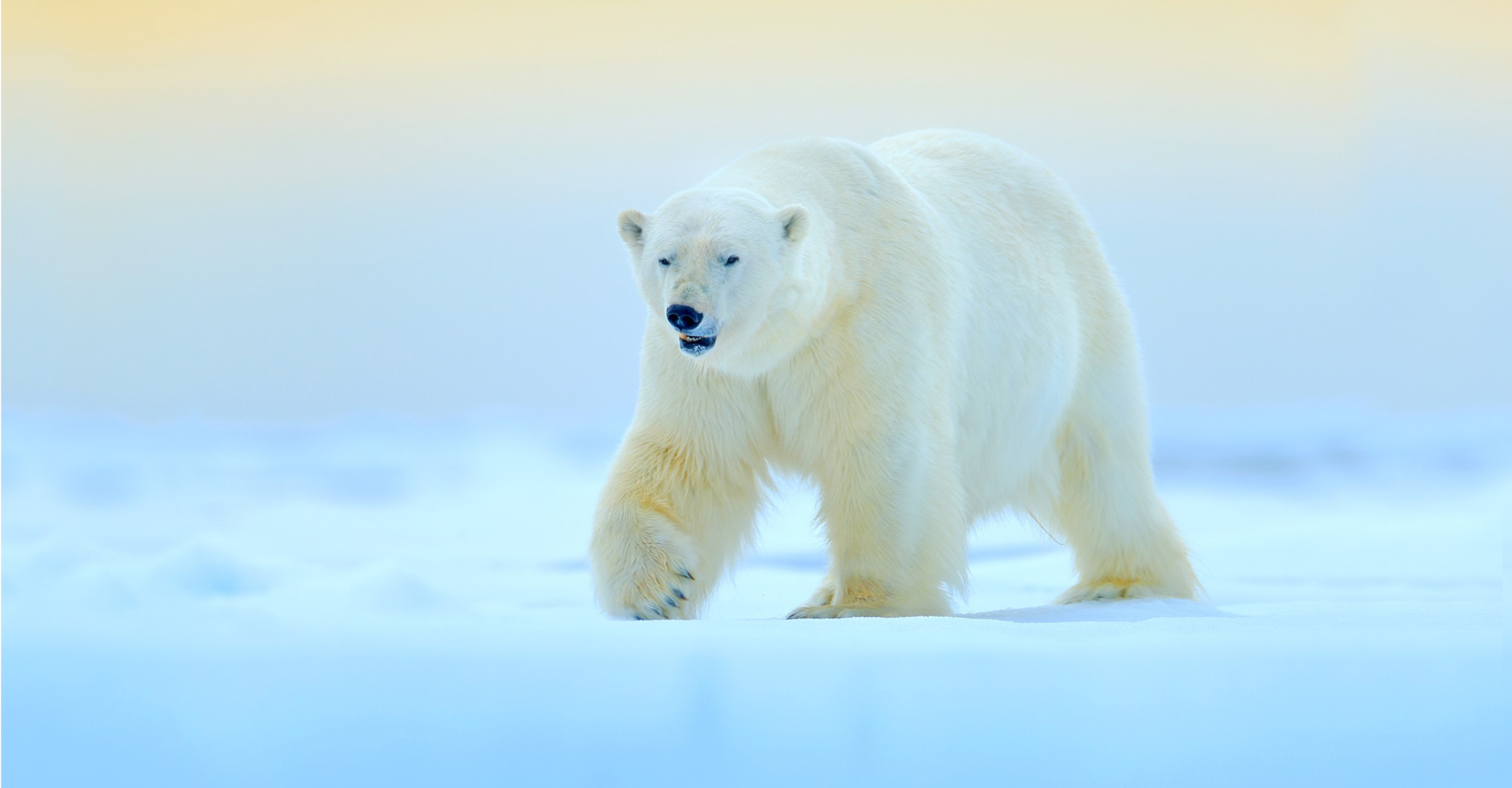
The Best Zoom Telephoto Ranges for Churchill Polar Bears
For a long while, the 100–400mm zoom telephoto was considered the ultimate wildlife zoom lens. Now, we’re seeing 100–500mm, 200–500mm and even 150–600mm lenses. This is fantastic, these lenses give you more range and more versatility. However, if you still have the 100–400mm class, you’re still going to do great with polar bear photography. But as you can imagine, if you have a lens capable of 600mm, you’re going to get that much “bigger” of a photo…i.e., the bear(s) will be bigger in the frame.
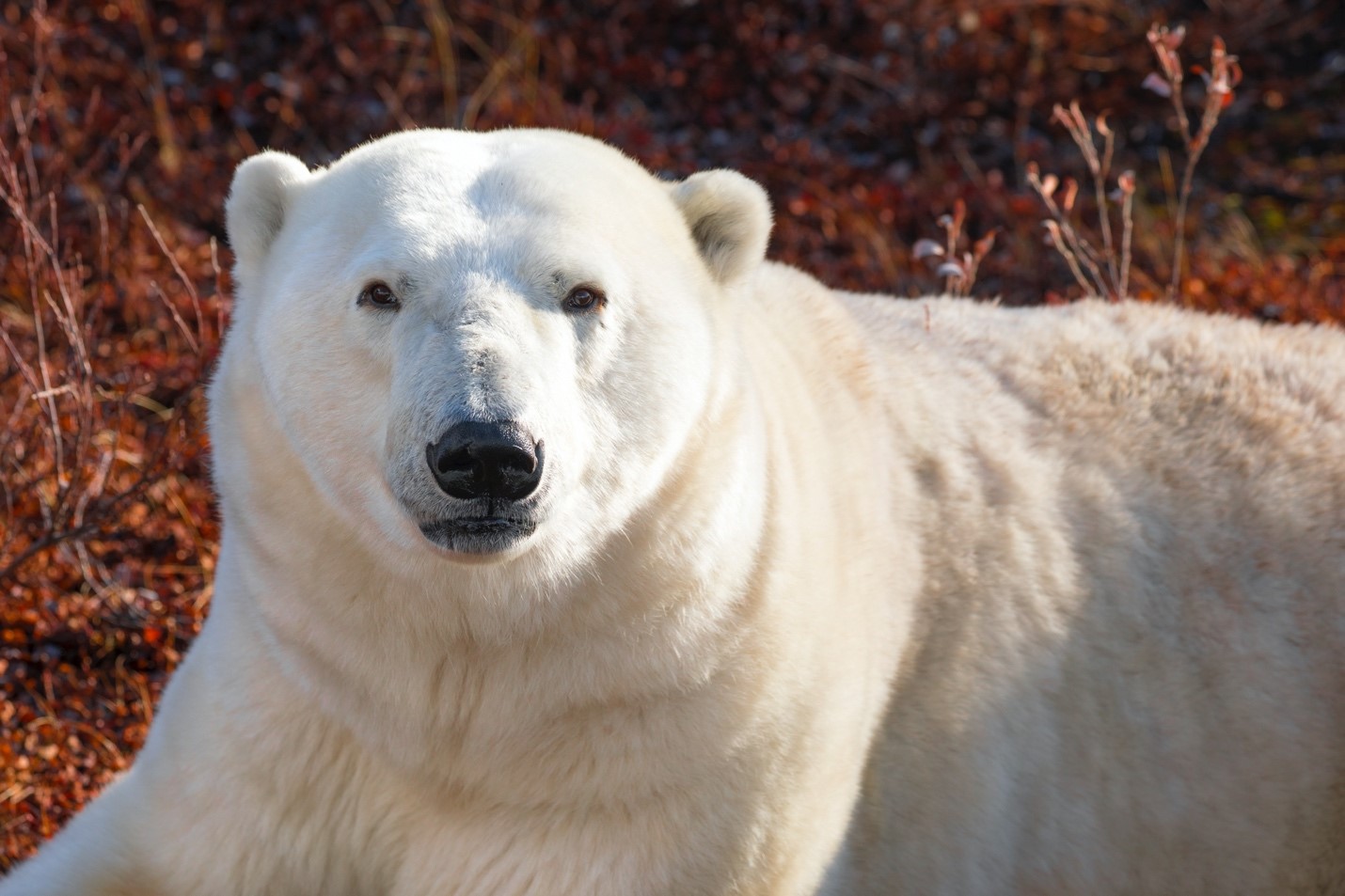
There is another key factor here that helps level the playing field, too, though, and that’s quality of your lens. For instance, a top-of-the-line 100–400mm lens may allow you to crop in further than a lower-end 150–600mm lens, such that they are actually more similar than you’d think. You can use editing software to make your resulting photo look bigger and quality lenses will retain their quality better as you crop in on the computer.
The Prime Lens Option
Prime lenses do not have any zoom; instead, they have a fixed focal length, like 300mm, 400mm, 600mm, etc. It’s not always the case, but 90% of the time, these prime telephotos are going to be significantly higher-quality lenses, such that they take sharper images that can be cropped while still retaining high-quality and sharp images.
Thus, a 400mm prime may actually produce a sharper image of a bear compared to a 200–600mm, even when cropped. But just keep in mind that you ultimately lack a good bit of versatility with fixed (aka prime) lenses because you cannot “zoom out” if a bear is closer than 400mm range.
If you go with a high-quality prime lens, expect the price to be in the high four figures (if not five figures). Plan on bringing a second camera body with a wider lens, like a 70–200mm or 24–70mm, for closer action.
Primes Aren’t for Everyone
Although high-quality prime telephotos are often the pro wildlife photographer’s choice, it’s not necessarily the choice for everyone. Yes they cost a lot, but they also are wildly heavy and bulky compared to zoom telephotos. This alone causes many photographers (even pros) to leave the big telephotos at home during wildlife photo expeditions in favor of the smaller, lighter, more nimble zoom telephotos like the 100–500mm and 200–600mm class of lenses.
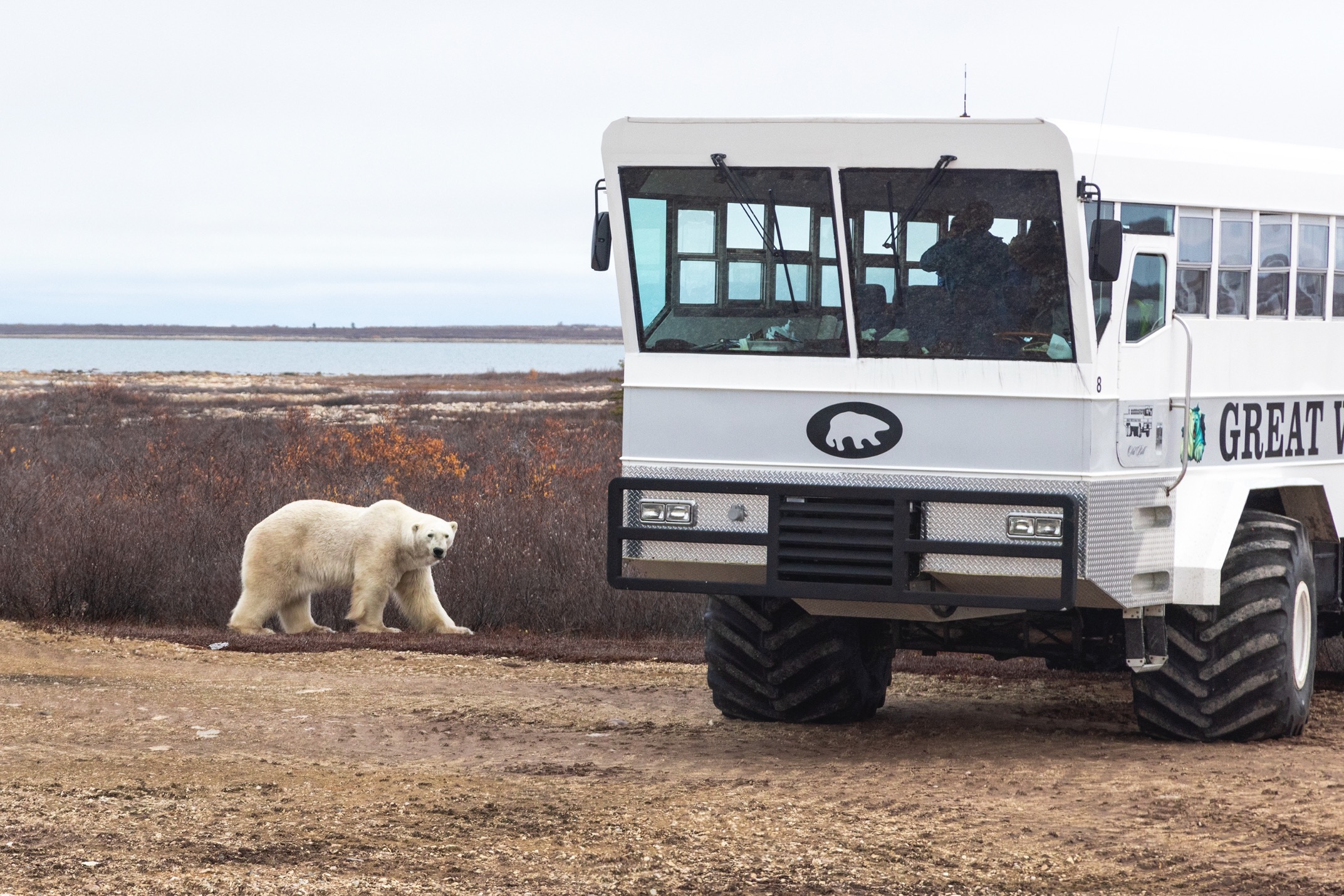
Can I Get Away with Less Than You Recommend?
Absolutely! If you do this, you should expect to focus on shots that feature polar bears in the landscape more. But frankly, these are some of the best shots I’ve seen over the years! I always recommend my photography guests spend a lot of time zoomed out to take plenty of wide shots—even if the bears are close—because it’s the habitat that tells the story.
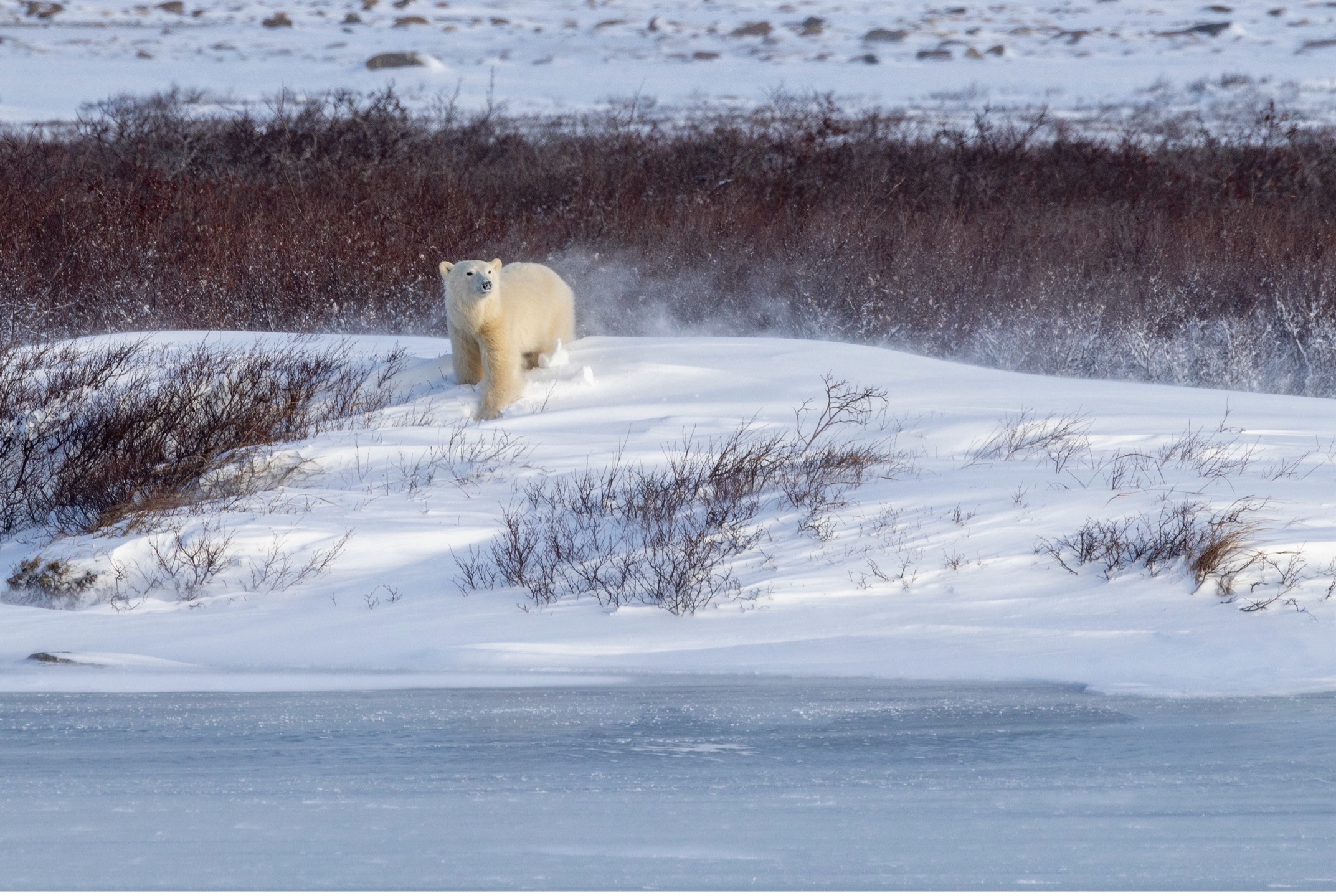
If you have the venerable 70–300mm class of lens, this is still going to be a good lens, but you probably won’t be able to fill the frame with a polar bear with each and every sighting.
But remember, if you have a crop-frame camera, a 300mm could actually be more like a 480mm if at a 1.6x crop factor.
What About Aperture Ratings?
I’m so glad you asked! Aperture is important and it’s also complex. If you’re not sure what aperture is, I recommend you read this aperture article to bring you up to speed.
A big, maximum aperture is always the most desirable, as it gives you the most flexibility to shoot in lower light and also get that dreamy background blur to your images. However, big apertures (aka, small f/numbers) will cost you in size, versatility and actual financial cost. Most telephotos, including those I’m recommending, have variable apertures like f/4.5-5.6 or f/5.6-7.1. In the world of maximum apertures, these aren’t all too impressive, but they are very normal and standard.
These aperture ratings have to do with optical limitations, and unless you’re willing to get the absolute top-of-the-line lens (think five figures), you are usually going to be shooting at around f/5.6. You can use Lightroom to add a blur to your background, and higher ISOs will allow you to shoot in lower light.
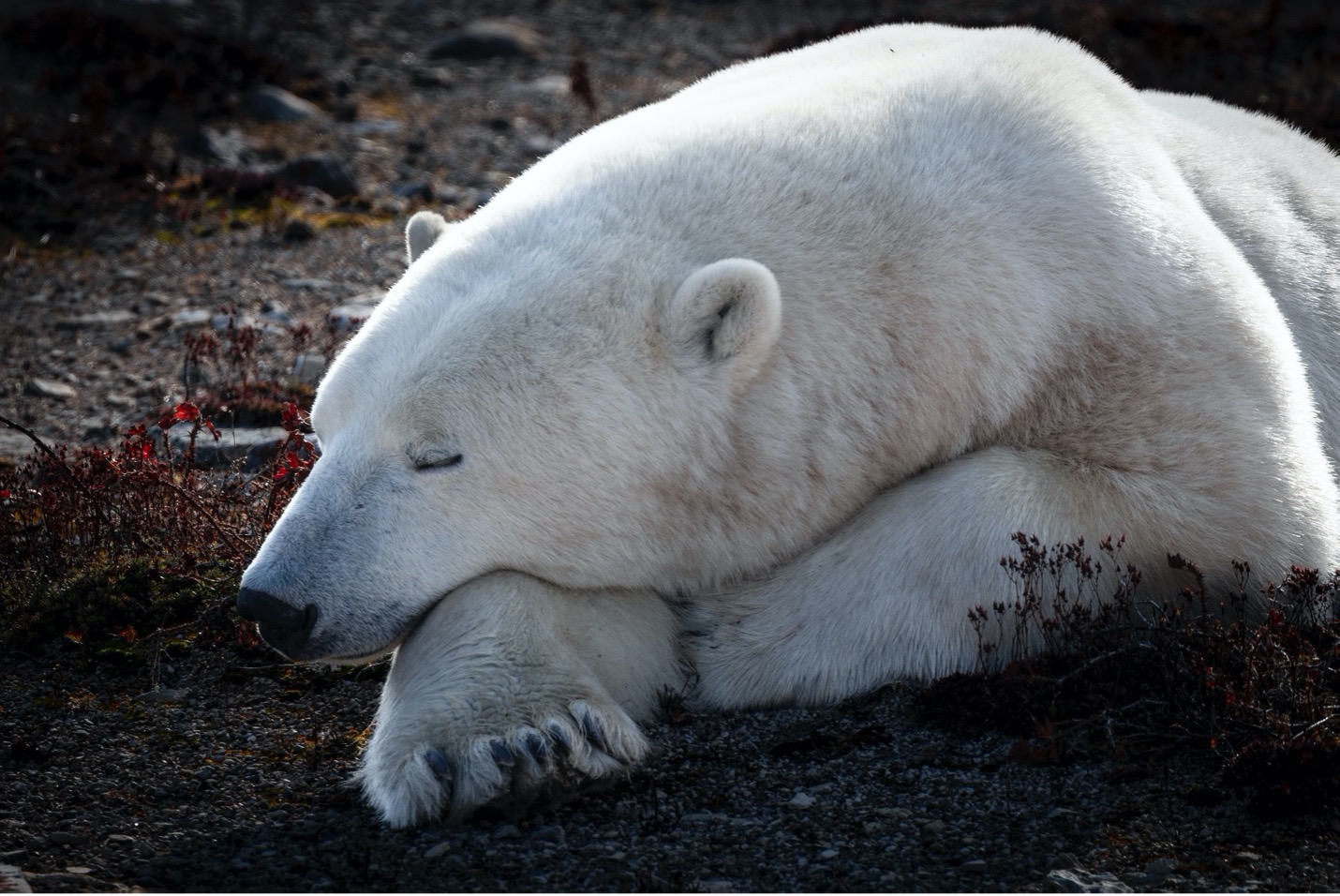
How About the 70–200mm f/2.8 Class?
These are absolutely amazing lenses, and I strive to bring mine with me on polar bear photo trips. However, 200mm is a tad too low to get me by for the entire trip. I still really want some big shots of bears filling the frame, and this class is unlikely to get me there. But what shots these do allow for always turn out great, as they are super sharp lenses with a fantastic aperture rating.
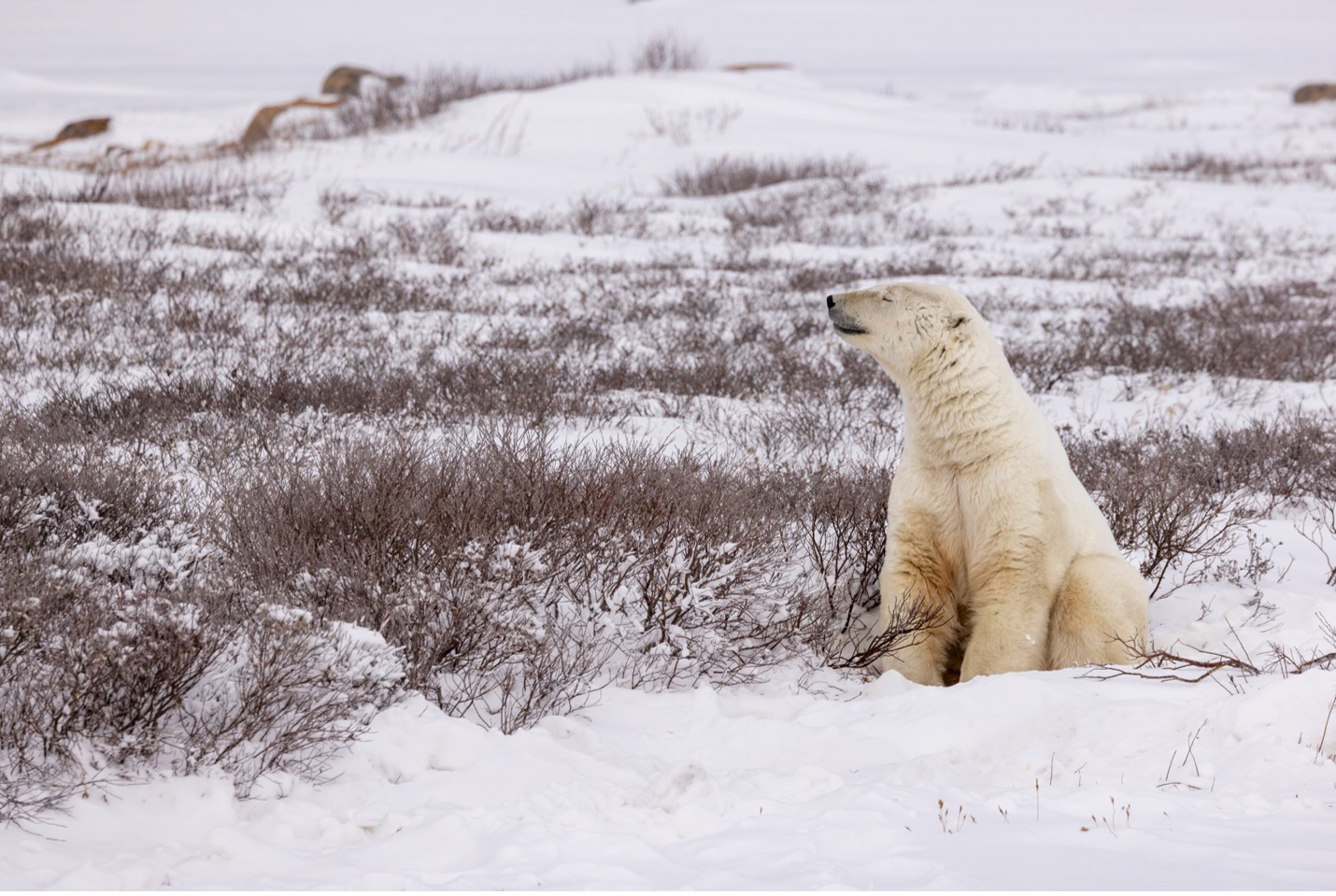
There is an adage I quote often, which is that there really is no such thing as “enough” telephoto power. You’ll always want more. No matter what maximum telephoto range you have, there will always be shots you see that you wish you could get. “If only I had a little more zoom.” Thus, it’s about striking that balance for yourself.
Are you the kind of photographer who really likes wildlife in landscapes (like it do)? Maybe you can get away with the lower range of my advice and do wonderfully. Are you the kind of photographer who really likes to capture the expression on an animal’s face, or fill the frame edge-to-edge with the white fur of a polar bear? Then you better aim for a 500mm or 600mm.
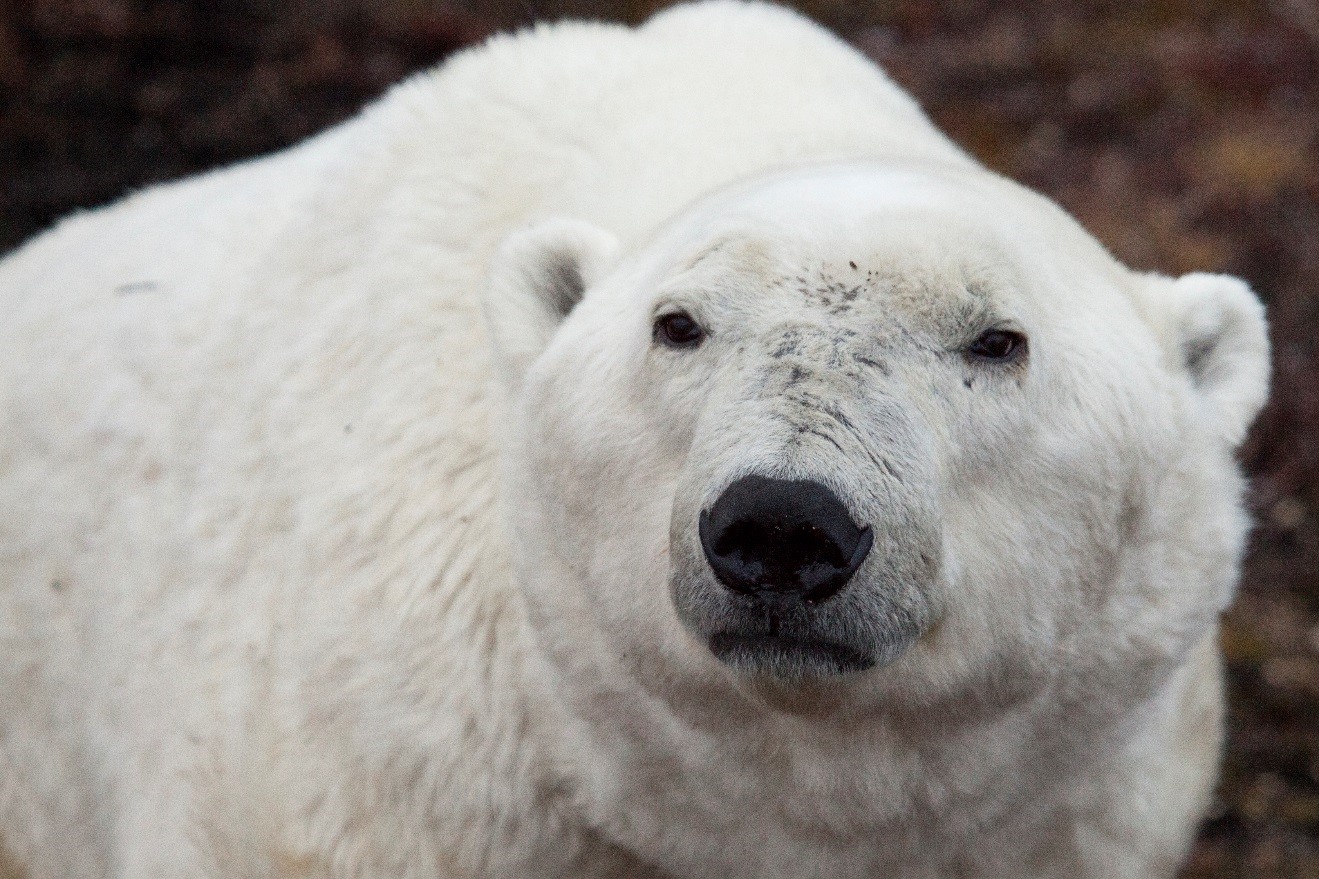
Do you have questions about your specific gear? Want to upgrade your equipment but not sure what direction to go? Leave a comment below and I’m here to help! And maybe I’ll see you up in Churchill while photographing these amazing creatures!
Go forward and give it a shot,
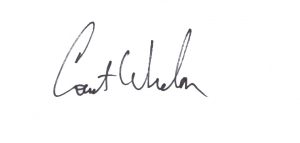
Court
10 Comments

Mike
May 10, 2024 at 10:13 am
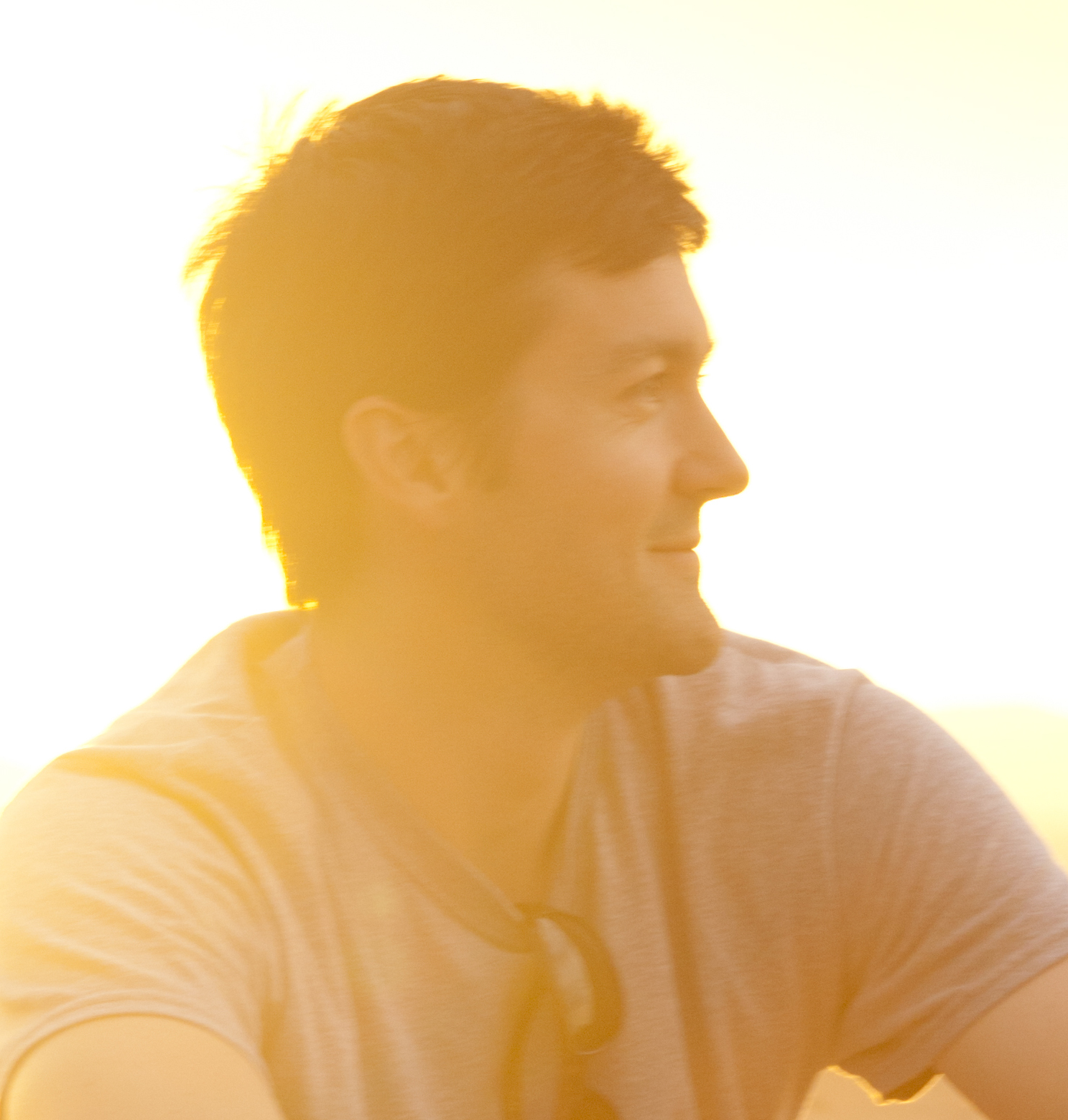
Court Whelan, Ph.D.
May 13, 2024 at 8:32 am

Kathryn Cripps
June 4, 2024 at 10:44 pm

Court Whelan, Ph.D.
June 21, 2024 at 7:53 am

Jim Spittler
June 6, 2024 at 2:03 pm

Court Whelan, Ph.D.
June 21, 2024 at 7:50 am

Angela Myers
October 7, 2024 at 10:35 am

Court Whelan, Ph.D.
October 9, 2024 at 9:22 am

Phil Hashimoto
October 20, 2024 at 7:06 pm

Court Whelan, Ph.D.
October 23, 2024 at 1:29 pm
Great explanation of the possible choices!
thanks, Mike!!
I have a somewhat unique situation in that I have an essential tremor – my hands shake. I still want to take photos both at Churchill and later on Alaska’s Katmai peninsula. Right now I just have a cellphone. What might be a good starter camera body and lens that would serve me well? I figure that a tripod might come in handy as well. Thanks for your help!
hi Kathryn, thanks for this note and I am happy to help! One option could be to get a smartphone stabilizer, like the DJI Osmo 6. I have one of these for video work and they’re SO fun and useful! I can literally be running and it keeps my iphone perfectly still. And the shutter button is right on the handle. However, if you do indeed want to upgrade your camera, I personally like Canon’s R10. Mix that with a 100-400mm lens and you’re going to be in a really good position! As far as hand movement, the key is to just shoot at a bit faster shutter speed, and/or brace the camera on a window or use a monopod. I think a tripod will be too clunky for Churchill PB trips, but a monopod is a happy middle, quite versatile, and definitely stabilized nicely! However, if you really like your smartphone, I think you’ll really get a kick out of the DJI Osmo 6!
Court:
We’re actually going to Bear Camp in July. It seems like most of your comments for polar bears would be similar to the bears at bear camp. I have a Sony A1 with the 100-400 lens. It a new camera for me and I’m not a novice but not an expert either. I’m considering a teleconverter to get additional focal length. Unless it is cloudy it seems like there would be enough light that the reduction in aperture wouldn’t have too big an effect. Does this make sense or is it overkill and my 100-400 should be adequate. I would like to fill some frames.
Thank
hi Jim! Great to hear from ya. The camera and lens combo you have is fantastic. The problem with teleconverters is that they definitely ding you on quality. That is, you will indeed notice both a loss of quality and of course lose stops of light. I’ve found over the years that teleconverters really only do well with big prime lenses, like the 300 and 400 f/2.8, etc. They just don’t work well with zoom lenses, unfortunately. If you really want to snag some extra reach, I’d highly recommend considering either renting a big prime (lensrentals.com is great) or trying to get your hands on Sony’s 200-600 lens. I wish I could tell ya better news on the teleconverters, but I just want to be honest here–I think you’ll be disappointed. It could be worth either renting one or purchasing one somewhere that you can return it if you’re not satisfied and doing some lens tests ahead of time. Best of luck out there!!
Hi Court, thank you for your explanation, I’m heading up to Churchill for the 7-day Polar Bear Adventure in less than 2 weeks. I will be traveling with my two full-frame Nikon cameras (D810 and D850), a 70-200mm lens, a 24mm lens for the potential of the Aurora Borealis, and still deciding on my third lens, Here are my options… My Nikon 200-500mm f/5.7, or a Nikon 300m f/4. I was leaning towards the latter since it’s a tad lighter and less bulky, and because I thought I could switch my camera’s image area to DX, which would extend my reach to approximately 420mm. It appears Churchill is quite cloudy, so I thought having more light accessible with the f stop on the prime would also be a plus. Could you please steer me in the right direction?? Thank you in advance!
hi Angela, I know we’ve already spoken on another channel on this, but I’m going to reply here so that everyone can see my answer here :). It’s a tough question between the 200-500 and 300 f/4. I always LOVE lenses with bigger apertures, and you’re exactly right that you can switch it to the DX and get a little more telephoto power over it. However, I really hate counting on that, as it’s got me in a bind and a bit flustered when in the field, in front of extraordinary photo ops. I just try to keep it simple. For this reason, although I really do love the 300mm f/4 class of lenses, I think I’d go for the 200-500 for versatility and range. Plus, it’s a darn good lens. Maybe not as optically sharp as the 300, but still good. If you’ve found it to be close enough, optically, to the 300 then it’d be the 200-500 all day for me. I hope this helps! As always, if you can sneak in the 300mm in your bag as a backup/alternate lens, it could be fun to have that as an option, still. A 420mm f/4 produces such a lovely bokeh!!
Court:
I will be at the Tundra Lodge with Nat Hab next week. I have a Nikon D7500, crop factor of 1.5, and a Nikon 18-300 lens. I like the lens for its versatility and light weight, but is it sufficient for this trip? If not, what do you recommend?
Thanks
hi Phil, so great to hear you’ll be at the Tundra Lodge! This camera and lens setup will do nicely. That will give you effectively a 450mm lens, which is what most pros would consider a really great reach for wildlife. Will you want more telephoto? Sure, we always do :). However, this is indeed adequate and gives you a nice range and the flexibility of shooting wide. The only other lens I would suggest or consider (perhaps renting from LensRentals.com) would be Nikon’s 200-500mm. This would give you extraordinary reach, and it’s not a wildly expensive lens for its superb quality and great telephoto reach. I have no doubt you’d enjoy that lens a lot. Hope you enjoy the adventure!!